What is Saturation for Mixing and Mastering?
Quick Answer
Saturation is a combination of two distinct but related effects - soft-knee compression, and harmonic generation. Saturation occurs when a signal’s input can no longer be matched by the output in a linear fashion; it can be used as a creative and sonically pleasing effect during audio production.
Saturation for Mixing and Mastering in Detail
Saturation is a term that’s often thrown around when mixing and mastering without much discussion as to what it truly means.

Hardware like the Distressor is used for saturation.
Of course, we all know the sound of saturation and can identify it when we hear it - but many of us don’t know what it means when a signal is saturated.
Saturation can be broken down most simply into 2 distinct forms of processing: compression and distortion.
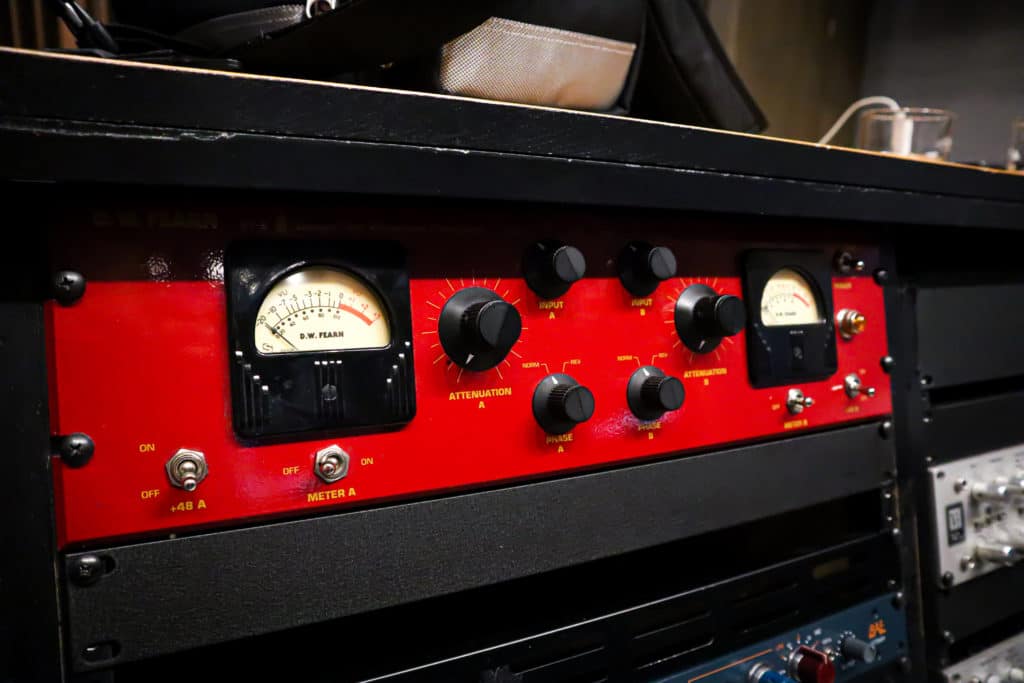
This tube amp will impart subtle harmonics onto the signal it amplifies.
When you have this combination, you typically create a saturated sound - one that incorporates both harmonic generation, and the fuller and more dynamically balanced sound associated with compression.
But there is a little more to it than that - saturation can sound different based on the machine used for saturation, given the electrical components of that machine.
It can also depend on the signal that is being saturated, and the extent to which the signal is being driven , or in other words, the amplitude of the signal’s input.

The amplitude of a signal determines the amplitude of the harmonics and the amount of compression applied during saturation.
Furthermore, the typical applications for saturation can vary wildly depending on the area of audio production being performed, whether that’s tracking, mixing, or mastering.
With that said, let’s explore saturation from both a technical and practical perspective. We’ll be covering how saturation is caused during tape, transistor, and tube saturation, as well as what that means for the sound of the signal.
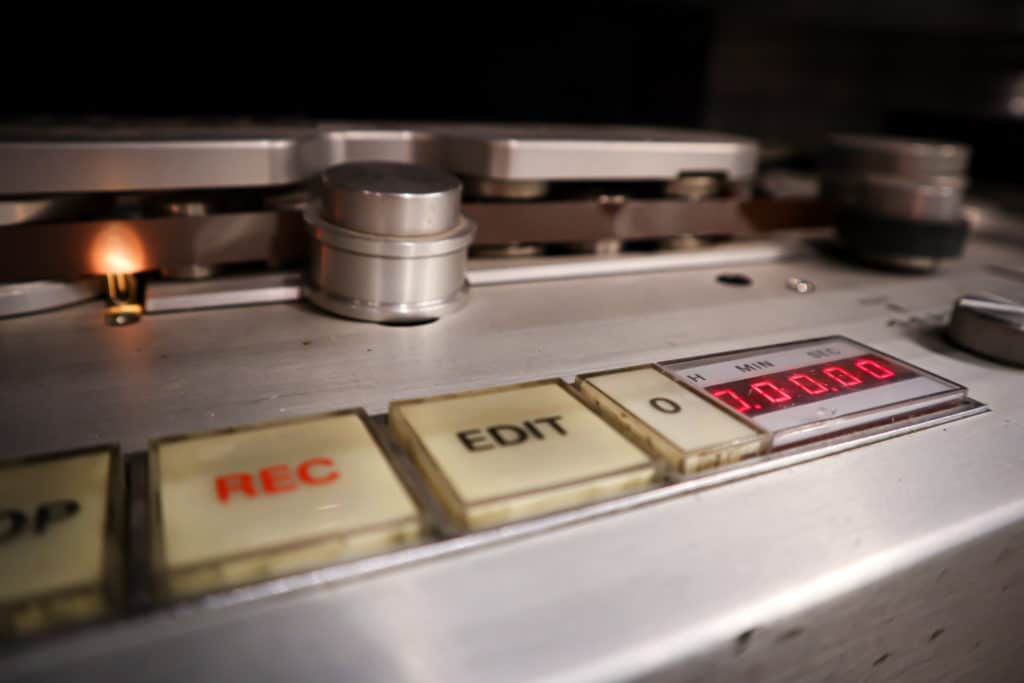
Different electrical components and recording mediums cause different forms of saturation.
Lastly, we’ll be discussing how saturation is popularly used during mixing and mastering, as well as briefly discussing how it can be implemented during the tracking process.
All-in-all, this better understanding of saturation should result in the effect being better implemented during tracking, mixing, and mastering.
As a bonus, we’ll also briefly go into how you can create your own saturation if you don’t have a saturation plugin.Additionally, we’ll list a couple of free saturation plugins that you can use.
If at any point, you’d like to hear your mix mastered with the importance of saturation in mind, send it to us here:
We’ll master it for you, and send you a free mastered sample for you to review.
What is Saturation?
Saturation is the process of “overloading” the electrical components of a piece of hardware, which causes the incoming signal to no longer be represented in a linear fashion. Overloading the electrical components of a piece of hardware is accomplished by increasing the input to a significant extent.
But what does “linear ” mean when it comes to saturation?
Maybe the best way to think about this is by comparing a linear input to output relationship with that of a compressor.
When you’re compressing, you usually see this graphic:
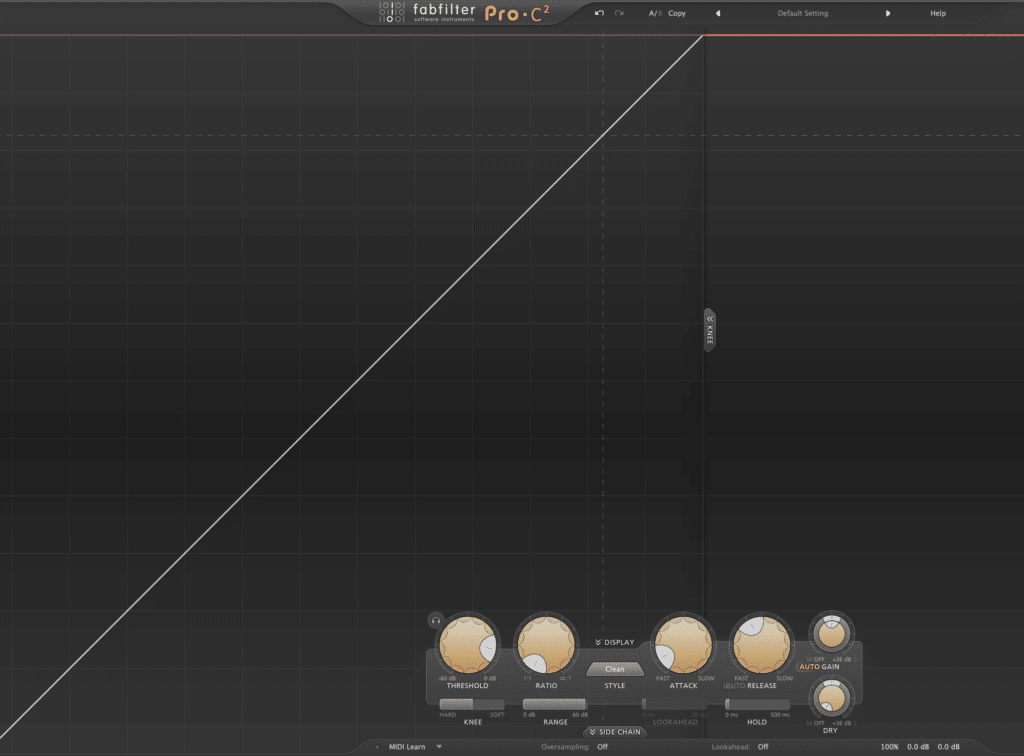
This shows a linear input to output ratio. It is also referred to as a 1:1 ratio.
With it, you can get a visual sense of how the input is eventual output in a linear, or 1:1 fashion unless you compress the signal. Typically when compressing, your ‘Ratio’ represents how the input will be compressed before becoming the output.
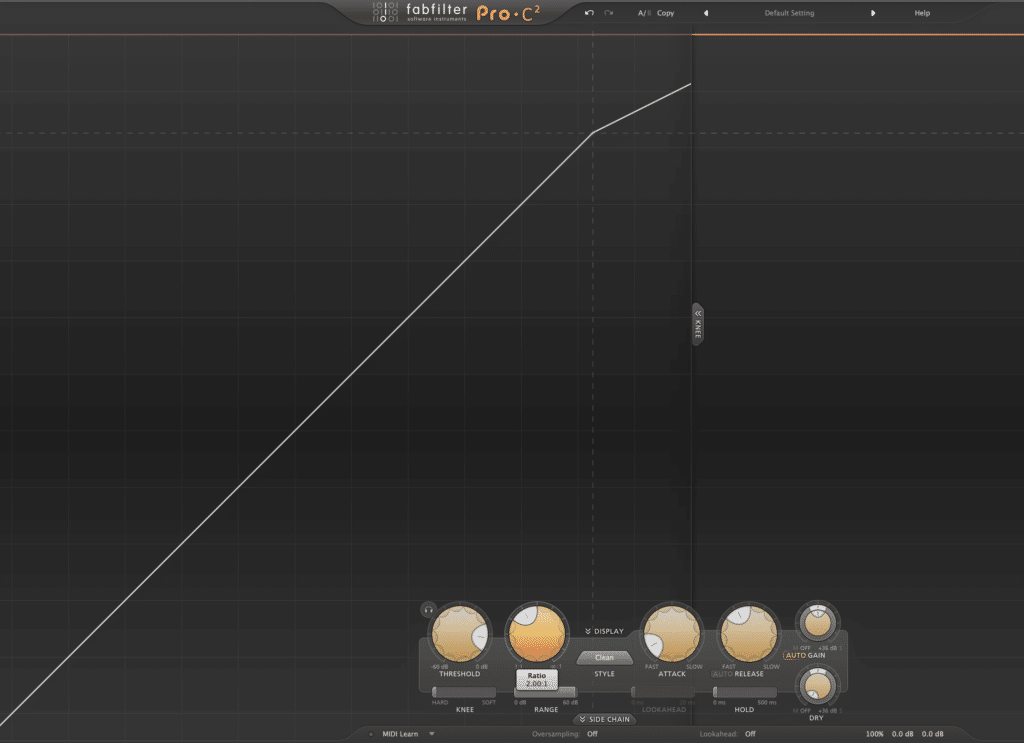
This is a 2:1 ratio. In this instance, the input to output ratio is no longer linear.
Notice that when a ratio of higher than 1:1 is set, for example, let’s use a compression setting of 2:1 , the relationship between the input and output is no longer linear and the signal begins to become attenuated.

Notice that when the input to output ratio isn't linear, signal will be attenuated. The same effect occurs during saturation.
This same process occurs during saturation. When a piece of hardware’s electrical components can no longer “handle” the electrical input they are receiving, they can no longer represent the signal in a linear fashion - in other words, the signal begins to become compressed.
As you can imagine, the more signal you feed into an already overloaded piece of hardware, the more the signal’s output will be compressed.
How does this compression contribute to the sound of Saturation?
Just like with any other cause of compression, compression caused by saturation will reduce the dynamic range of a signal.
This means that the signal’s transients and loudest parts will be reduced in amplitude, making the quieter aspects of the signal closer in amplitude to the formerly louder aspects of the signal.

Limiting, a form of compression with a high ratio, attenuates dynamic peaks while amplifying low-level signals.
After compression, if you increase the amplitude of the entire signal, you have in turn increased the amplitude of the quietest aspects of the recording to the greatest degree.
This will make the sound of the recording more detailed and complex, as the often masked aspects of an instrument, mix or master will become perceivable.
How Does Soft-knee Compression Relate to Saturation?
The compression employed by a saturated electrical component is soft-knee in nature, meaning that the signal will gradually be compressed, as opposed to instantly like with a hard-knee setting. This often results in compression that is less perceivable (depending on how much of the signal is being compressed).
How Saturation Creates Harmonics
In addition to creating soft-knee compression, saturation also results in harmonic generation; harmonic generation depends primarily on the electrical components that are being saturated.
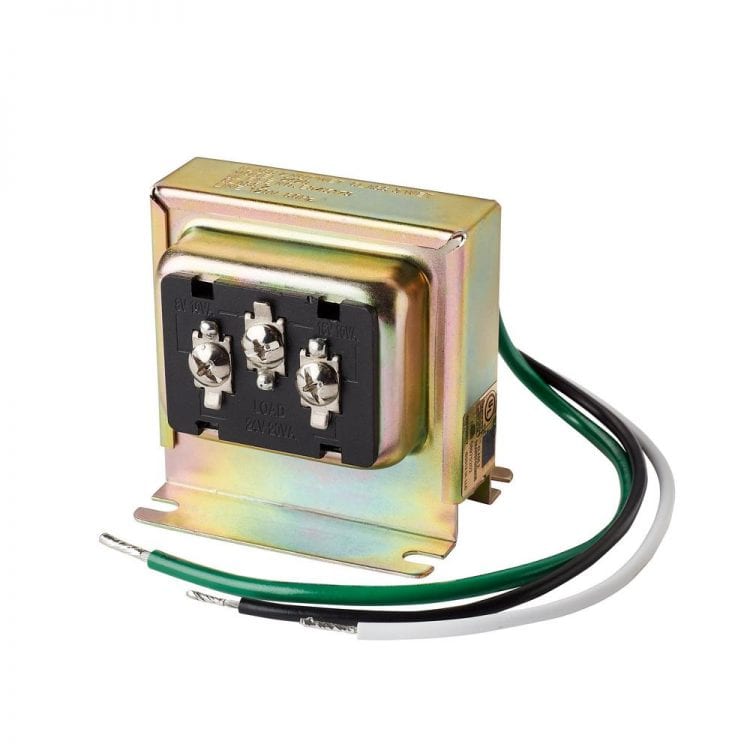
Pictured here is a transformer - a popular electrical component that can saturate when the incoming electrical signal is strong enough.
Tape, Tube, and Transistor components each result in differing forms of harmonic generation, which can also vary depending on the tape, tube or transistor used.
Let’s look at each of the electrical components individually.
Tape Saturation
Tape saturation occurs when the magnetic particles embedded in the tape can no longer be re-arranged or have their poles re-oriented. This happens when a loud enough signal is recorded that requires the entirety or majority of these magnetic particles.

The medium of Tape, as well as the transistors and transformers in a tape machine, can be saturated
If there are no more particles that can be re-oriented, compression and harmonic generation will begin to occur. This will result in both even and odd harmonic generation.
If you’re using a plugin to emulate tape saturation, it’s also possible that the plugin will subtly attenuate the high-frequency range to create a perceived “warmth.”
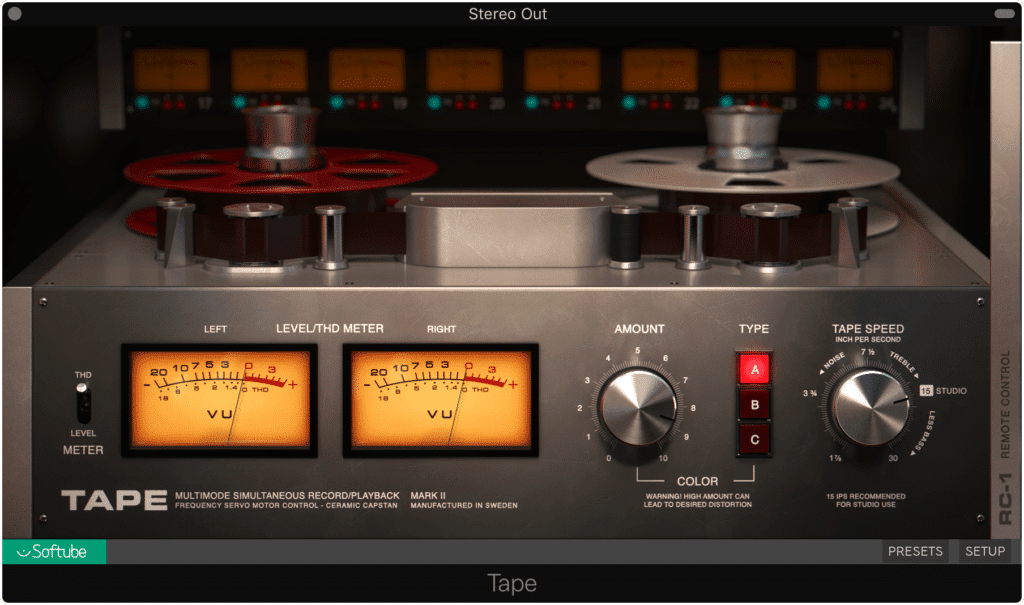
Some plugins attenuate the high-frequency range of a signal during tape saturation. Although this may be an accurate depiction of tape's frequency spectrum when the tape is slowed down to a lower tape speed, tape machines are capable of recording the frequency spectrum accurately when properly calibrated.
It should be noted that although this “warm” sound is often associated with tape saturation when a tape machine is properly calibrated, the frequency response will be balanced, and high frequencies will be reproduced accurately.
On a separate thought, considering the magnetic particles are inherently tied to the harmonics generated, the number of magnetic particles will determine at what point saturation will begin to occur, and therefore the harmonics that are generated.
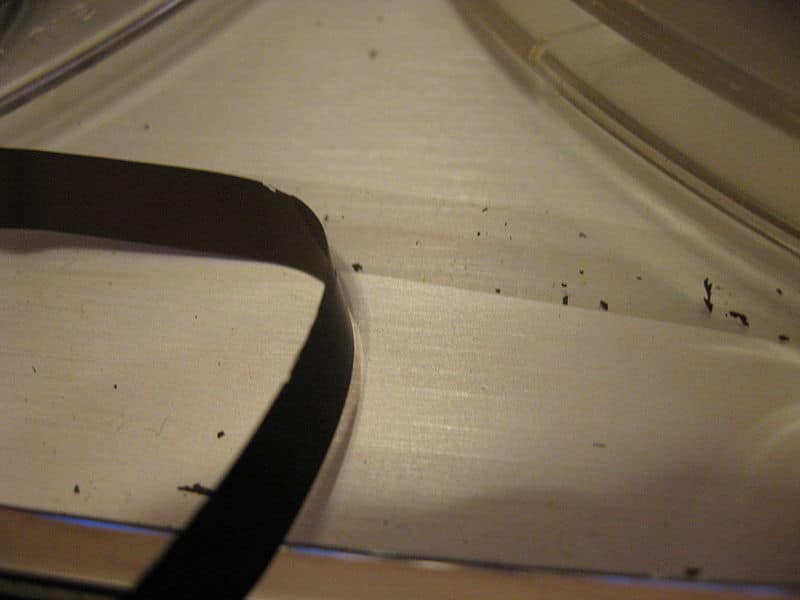
Magnetic tape particles fall off in various degrees during every playback.
For example,if the tape used is old , and has shed a fair amount of its particles over time, then harmonics will most likely be introduced at a lower input amplitude, as the point of saturation will be lower.
Tube Saturation
Tube saturation is a highly popular form of analog emulation, and is used to evoke a classic sound in recordings; tube saturation occurs when the electrons can no longer flow from the tube’s cathode to the anode, due to a positive charge that has been created between the two.

Tube saturation is arguably the most popular form of saturation.
This positive charge initiates once the incoming electrical signal is strong enough, in turn overwhelming the tube so to speak, and no longer allowing for a linear input to output ratio.

A positive charge in a tube inhibits the flow of electrons, in turn compressing its electrical output
Tube saturation creates a strong second-order harmonics, as well as both even and odd harmonics, depending on how significantly the tube is being saturated.
Tubes often sound “warm” as well, but this more likely due to the second-order harmonic, which is closer to the fundamental frequency and lower in the frequency spectrum.
Whereas tape saturation may create a warm sound from high-frequency attenuation, tube saturation creates a warm sound from low-frequency amplification.
Similar to tape, the condition of the tube, its age, and the quality of its components and craftsmanship will all determine the point of saturation and what harmonics are generated once the tube is saturated.
Transistor Saturation
Transistor saturation is the most common form of hardware saturation, as transistors and transformers are more commonly used in electronics than tubes. Transistor saturation occurs when the input current has increased enough to cause a voltage drop, which in turn prohibits any additional electrical signal.
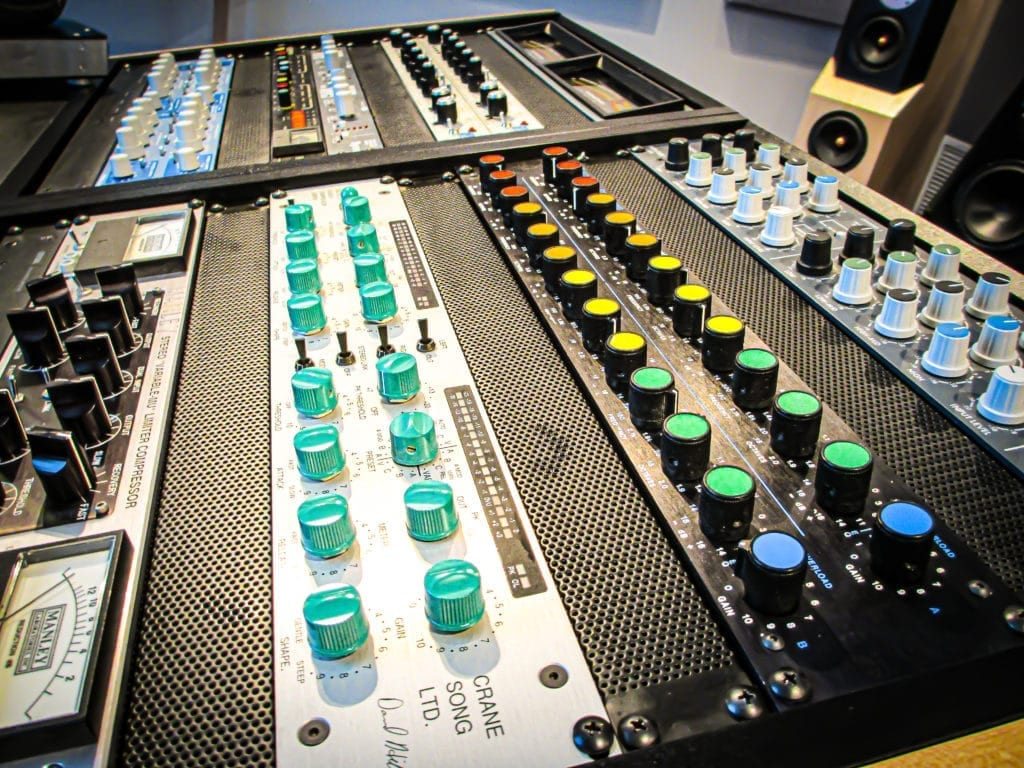
Most hardware is comprised of transformers and transistors.
Considering how common transistors are, this is the form of saturation we hear most often in our guitar pedals and outboard gear.
Transistor distortion isn’t often associated with particular frequency response, but it does result in a fuller, more complex sound.
Transistor saturation contains both even and odd harmonics and depends on the transistor type.

Transistor saturation includes both even and odd harmonics.
Now that we understand saturation from a technical perspective, let’s look at the more practical side of things.
If you'd like to learn more about other forms of distortion, check out our blog post on the topic:
It details multiple forms of distortion and showcases the harmonics they create, as well as some possible applications for that distortion.
How is Saturation Used During Tracking?
Saturation is used during tracking by driving excessive signal into the outboard gear used to amplify, compress, equalize, or otherwise process the incoming signal prior to it being recorded. Saturation during tracking is used predominantly in rock recording but can be utilized in any recording in which distortion is desired.
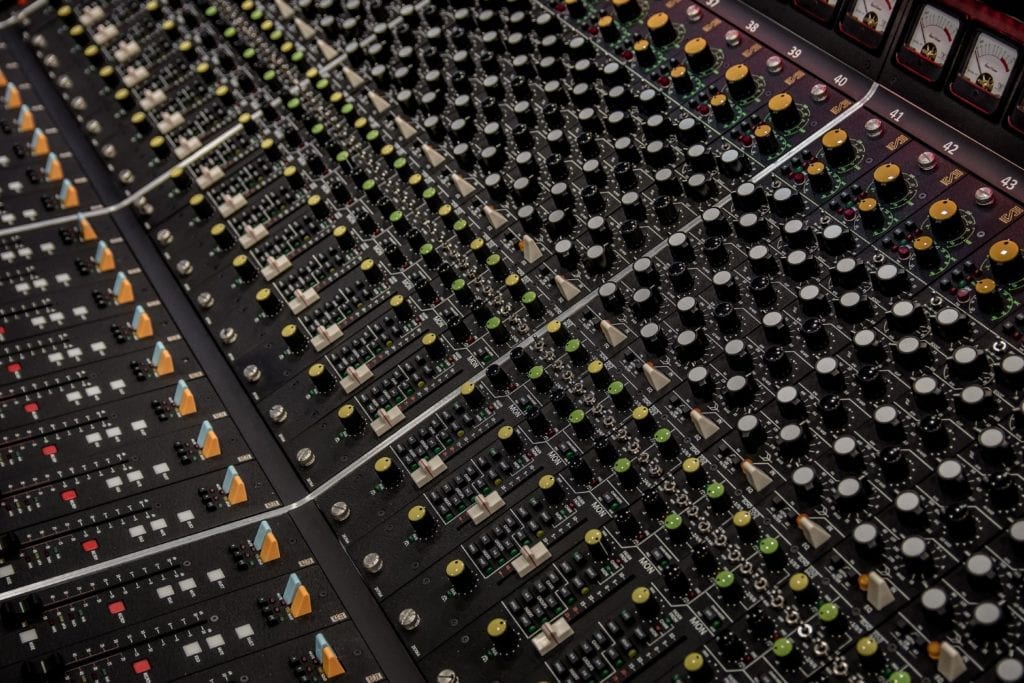
The channel strip used to amplify and process a signal can be saturated prior to the signal actually being recorded.
Saturation often occurs in the amplification systems used for bass and electric guitars , but, the hardware used for recording can also be driven to the point of saturation.

Amplification is also driven to the point of saturation during recording sessions.
For example, a channel strip that includes a microphone preamp, equalizer, or compressor can be saturated at each stage of processing - all prior to the signal actually being recorded to tape or converted into a digital recording.
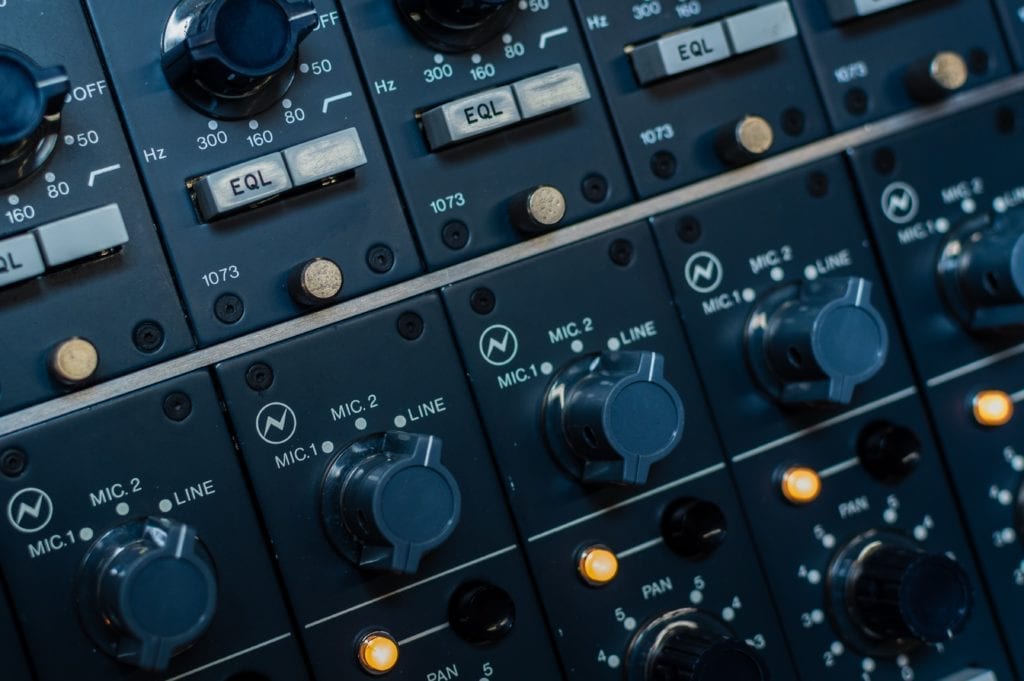
Some channel strips and preamps impart very pleasant saturation when driven.
This gives tracking engineers plenty of opportunities to drive a signal into saturation for some desired compression and harmonic generation. In fact, certain compressors used during tracking, such as the Empirical Labs Distressor and FATSO were designed with creating a compressed and distorted signal in mind.
How is Saturation Used During Mixing?
Saturation is used during mixing both for a creative effect and then to thicken certain elements of a recorded signal. By using saturation during the mixing stage of audio production, an engineer can create an upfront, complex, and sonically present sounding recording, as well as a creative or unique one.
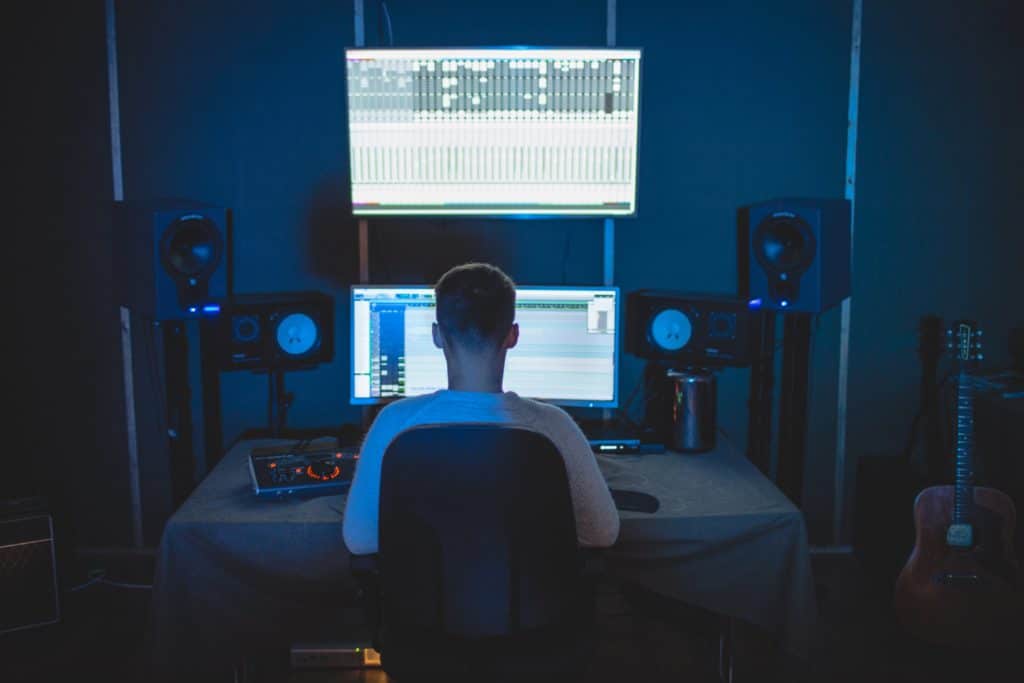
During mixing, saturation can be used for both technical and creative purposes.
Mixing, being both a technical and creative endeavor, gives engineers the opportunity to attempt to make something sound great - both in a technical sense and a creative sense.
For example, distortion can be used to make a vocal sound full-bodied, warm, and present. Distortion can also be used to make this same vocal unintelligible, or a garbled and indiscernible mess.

For example, a vocal can be saturated to make it more present and upfront, or it can be saturated for creative and unexpected distortion.
That being said, how saturation is used during mixing is entirely up to the engineer and depends on the context of the material. In short, an engineer can use saturation to establish a competitive sounding mix, and/or to create something entirely unique and unexpected.
Most modern mixes, being created in a digital system, utilize digital-analog emulation plugins to recreate the effect of this saturation.
Granted, some studios still use hardware, but given the expense to establish these studios, many studio owners and engineers are gravitating towards digital processing for their mixing sessions.
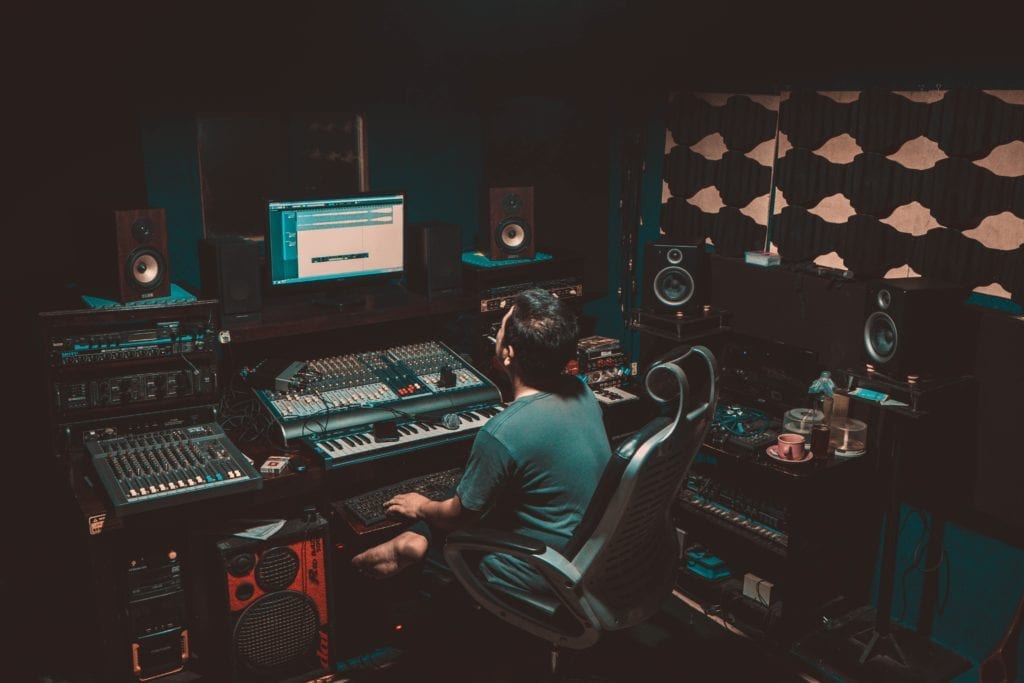
Most saturation used during mixing is created via digital processing that mimics analog equipment.
Although the views of digital processing are mixed, saturation can be effectively emulated in a digital environment - just not quite to the same degree of complexity found in the actual hardware units, they emulate (at least not as of yet).
Do you have a mix that you’d like to hear mastered? Send it to us here:
We’ll master it for you and send you a sample of it for you to review.
How is Saturation Used During Mastering?
Saturation is used during mastering to create a fuller, more complex and present sounding recording - it is often used to process an entire stereo mix, but it can also be implemented during stem mastering. Saturation is used less for creative purposes during mastering, and more for creating a competitive sound.
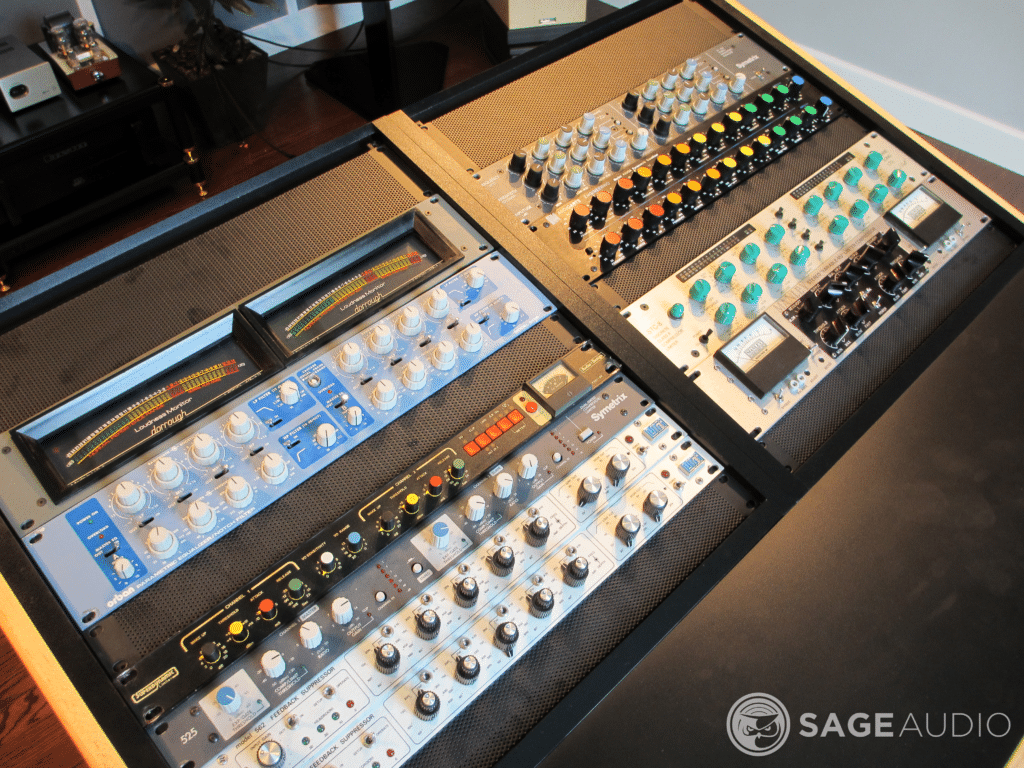
Saturation is used subtly during mastering.
More often than not, saturation is used subtly during mastering, as a way to augment low-level aspects of the signal and to “fill in the gaps” of a mix.
By ‘fill in the gaps ’ I mean that the harmonics generated and the compression used when saturating cause the dynamic range to become less significant , as well as increase the amount of information or signal between the quietest and loudest points of that dynamic range.
By doing so, you create a master that is louder overall - one that will translate better to consumer-grade stereo systems.
Furthermore, saturation can be used during mastering as a means to evoke a certain tonality. For example, tape saturation may be used to elude to a particular era in music.
Lastly, saturation helps to “glue” a signal together . By processing the entirety of a mix with saturation, the entirety of that mix is being run through a single effect, almost coating that signal in the effect.
By doing this, you create a cohesive and uniform sound amongst all of the various instruments and vocals in that mix.
If you'd like to know more about how saturation plays a role during mastering, check out our blog post on the topic:
It shows how analog equipment is used to create a cohesive and saturated master.
What Are Some Free Saturation Plugins?
If you don’t have saturation plugins that you’ve purchased, yet you still want to hear your instruments, mixes or masters with some saturation, here are a couple of plugins that you can use for saturation.
Two Free Saturation Plugins:
- Saturation Knob by Softube
- Tube Amp by Voxengo
The Saturation Knobby Softube is a great option for saturating your mixes and masters. Due to its subtly at lower levels, its safe to use on a mastering session - and due to its tenacity at higher levels, it can be used on individual instruments for great creative effect.

The Saturation Knob is a classic free distortion plugin.
The Tube Amp by Voxengo is an incredibly simple and straightforward plugin, that allows for tube amp emulation. It’s primarily used for introducing harmonic generation that closely models how tube saturation affects a signal.

The Tube Amp is a fantastic option for saturating your signal.
Like the Saturation Knob, the Tube Amp can be used on both full mixes and masters, and on individual instruments.
If you’d like to learn about some more free distortion-based plugins you can use for your mixing and mastering sessions, check out our blog post on the topic:
It showcases 10 great free plugins you can download today.
Additionally, if you’d like to emulation saturation using stock plugins, this is definitely possible. All you need to do is use soft-knee compression in correlation with subtle harmonic generation.
To create the compression you’d use a compressor plugin, and to create the harmonic generation you could use your stock distortion plugin. Be sure not to use a hard-clipping or bit-rate reduction form of distortion , as this will generate unwanted and unpleasant sounding high-order harmonics.
Conclusion
Saturation is a great effect that evokes the sense of classic recordings and recording technology. What was sometimes considered a source of frustration for early engineers (as they were annoyed with how they couldn’t achieve the cleanest signal possible) has become a sought after sound in the era of digital recording.
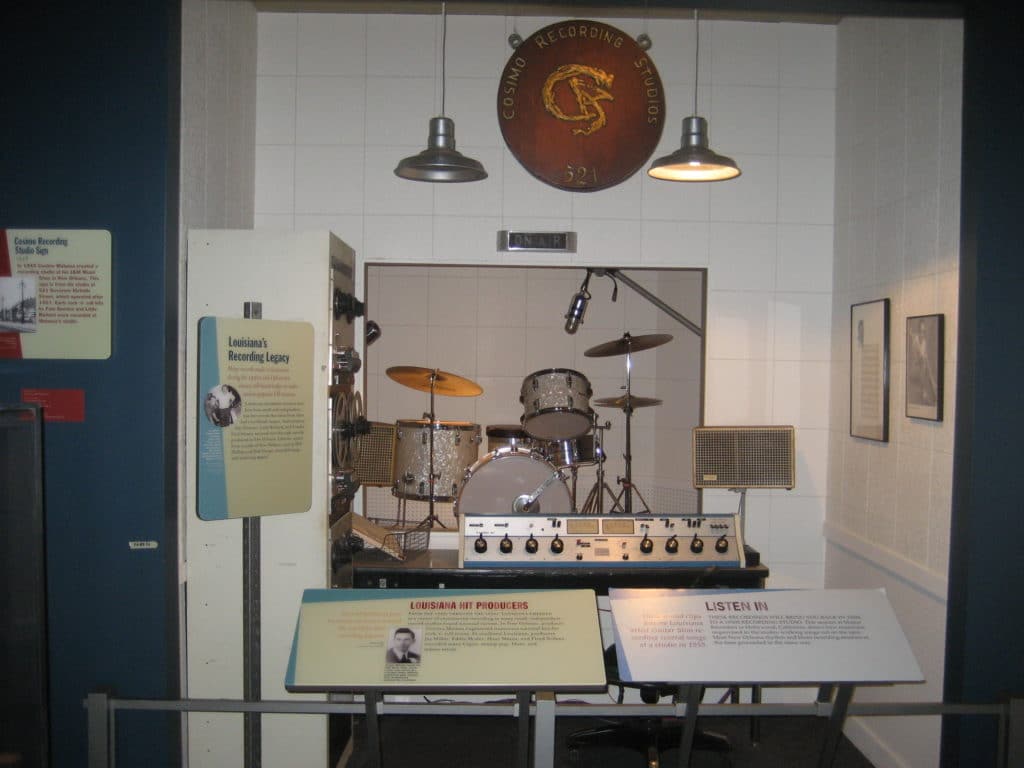
Saturation was often a cause of frustration for early engineers, but today, it is a sought after and desired sound.
Saturation can be achieved both in a digital system with analog emulation plugins, or in an analog system by saturating electrical components.
However you choose to saturate your signal, understanding the processing that is occurring during saturation, and knowing the best applications for it will ultimately lead to it being implemented more effectively.
If you’d like to hear a mix of yours mastered with saturation in mind, and using solely analog equipment, send it to us here:
We’ll master it for you and send you a free mastered sample for you to review.
How do you use Saturation?




